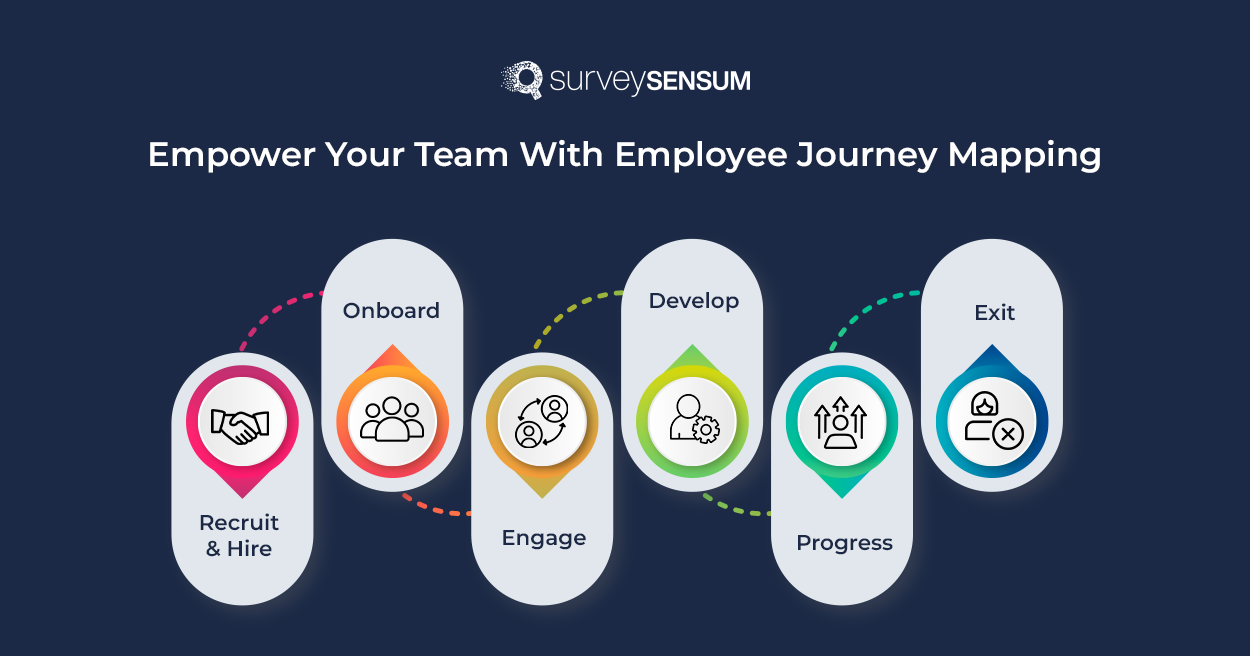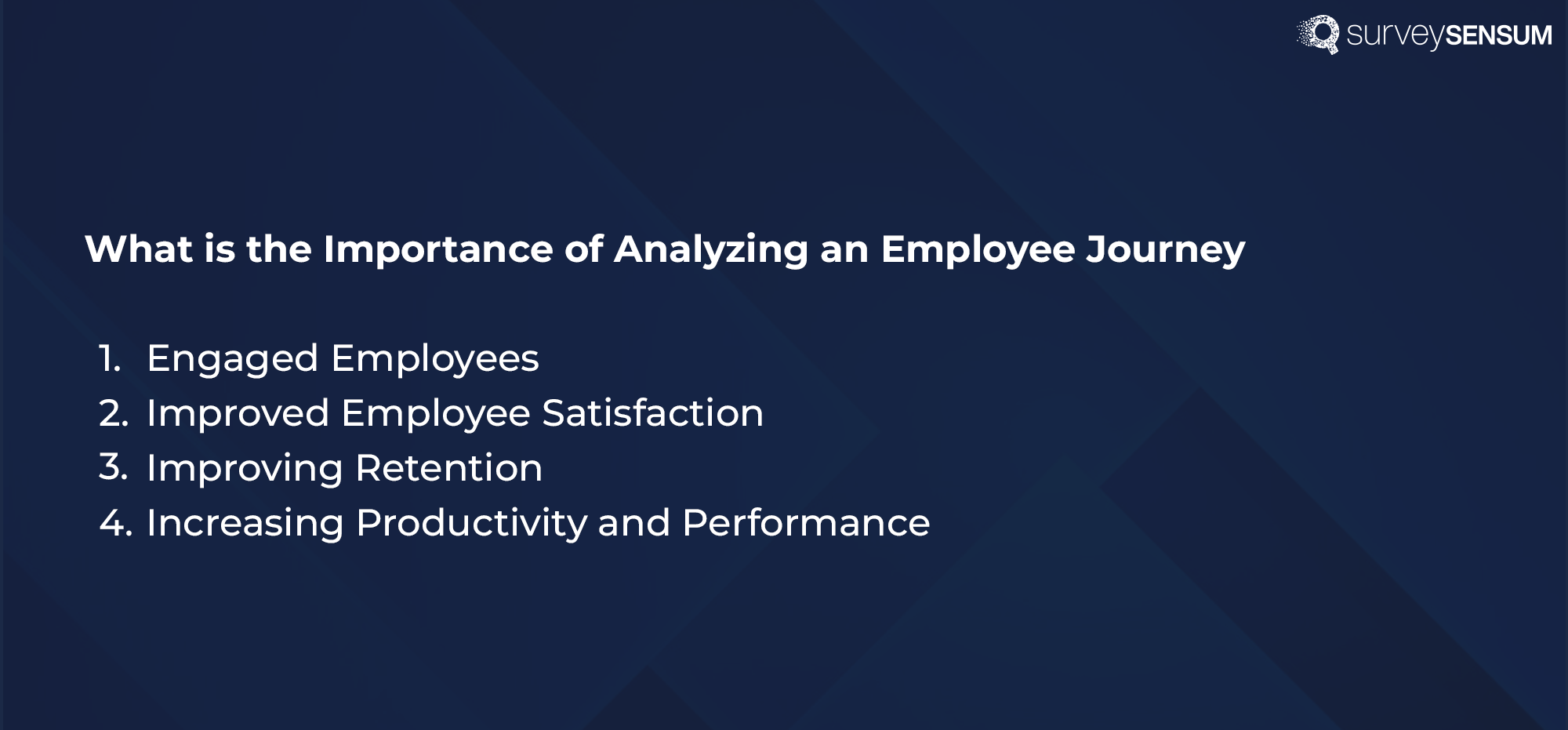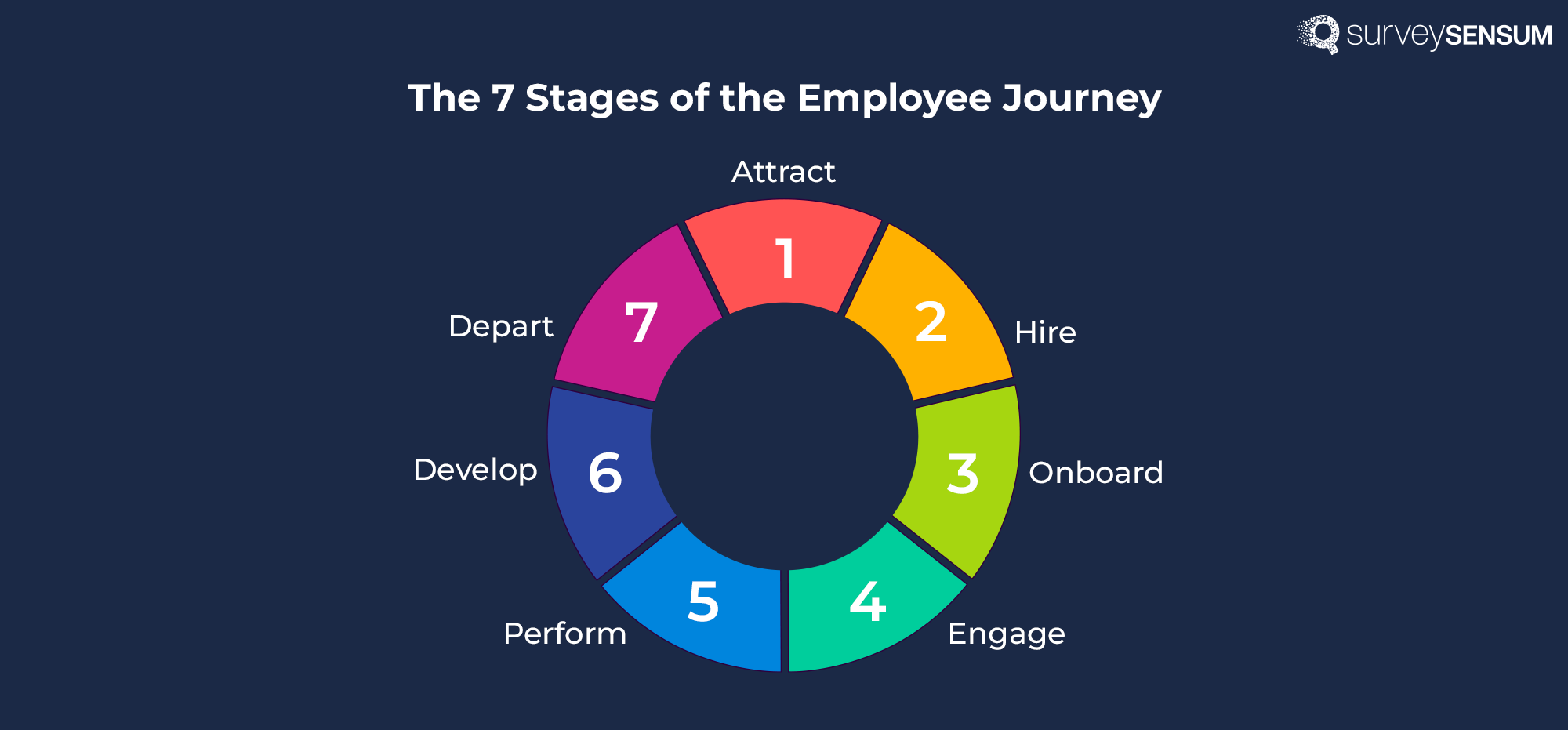9 Ways to Improve NPS Response Rates
Read More

Did you know that companies that excel at customer experience have 1.5 times more engaged employees than companies delivering mediocre customer experience?
This shows the exceptional impact engaged employees have on customer experience. The higher the employee engagement, the better will be your customer experience and the greater will be the number of happy customers!
Now, what is the first step to boost employee experience?
Well. that would be understanding your employee, their needs, and the ease at which their work is facilitated, possibly with the help of an effective employee feedback tool and actionable strategies.
In short, to build a strong employee experience, you need to look at your employee’s journey in your company. So, let’s understand what the employee journey is, its different stages, and how to facilitate it for your company’s growth.
The employee journey, also known as the Employee Experience Journey or Employee Lifecycle, refers to the various stages and touchpoints that an employee goes through during their time with an organization, from recruitment to departure.
Similar to the concept of the customer journey, the employee journey focuses on understanding and optimizing every interaction an employee has with the organization, from initial attraction to ongoing engagement, and eventually offboarding.
Now, how is the employee experience different from the employee journey?
It is simple. Employee experience is the overall engagement, satisfaction, and well-being of an employee during their employment. Whereas the employee journey traces the lifecycle of the employee and looks at their experience at each stage.
Organizations can enjoy a lot of benefits if they pay attention to their employee journey meticulously.

According to a Gallup study, companies with highly engaged employees have a 59% lower turnover rate than those with disengaged employees.
This shows that employees who feel valued, engaged, and satisfied are more likely to stay with the company for a long time, reducing employee turnover. This can be achieved through mapping out employee journeys and understanding their needs, preferences, and expectations.
Mapping the employee journey will help you build a better experience at work for your employees. You will be able to understand their pain points and needs in a better way and amend your company culture in their favor. This will make them feel valued and respected, which in turn will boost the number of happy employees in your firm.
According to the Society for Human Resource Management (SHRM), the cost of replacing an employee can range from 50% to 200% of their annual salary.
Identifying and addressing pain points in the employee journey can help reduce turnover rates by creating a more supportive and fulfilling work environment. Employees are more likely to stay with an organization that invests in their development, recognizes their contributions, and fosters a positive work culture throughout their employment.
According to a study by the University of Warwick, happy employees are 12% more productive.
Employees who have a positive experience throughout their journey are more likely to be productive and perform at their best. When employees feel supported, engaged, and valued, they are motivated to contribute their skills and efforts toward achieving the organization’s goals.
So, listen to the voices of your employees and leverage their feedback to boost your employee engagement with SurveySensum’s quick and easy-to-design employee survey templates.
Now, that we understand what the employee journey means and what its benefits and impact on employee engagement and satisfaction are, let’s now explore the 6 stages of the employee journey.
An employee journey has primarily 6 stages which are as mentioned below:

This stage simply refers to the hiring process and all the related steps your company takes for the same. Understanding this stage will help you to strategize job postings to attract applicants that are best suited for the opening and also identify any roadblock that prevents potential hires from applying.
Onboarding refers to the responsibilities related to acquainting a new hire to the various systems, procedures, and goals of your organization. Your new hires will need a transitional period to adjust and devise efficient approaches. Therefore, make sure you give them ample time to do so. Successful onboarding transforms the initial excitement of a new role into a lasting engagement.
Now, that your employees are onboarded, the next step is to engage them. To improve employee engagement, the main task is to communicate. Create a communication strategy to understand employee needs and assess them. You can schedule surveys for the same and automate them via an employee feedback tool. By doing so, you can regularly assess your employee experience and take appropriate actions.
This will be a continuous process to assess your employees to develop their skills and help them grow at a comfortable pace. To track this, you should measure how productive your employees are, their ability to work in a team and understand their career goals. Giving chances to learn new skills is crucial, especially for those wanting to acquire a diverse set of skills to drive career growth.
Once, they start performing and are on the right route, encourage your employees to align their efforts to the company’s vision and goals. Now, make sure you don’t force the idea on the employee. Instead, motivate them with incentives and individual growth as they align their efforts for the bigger picture. This will encourage them to stay committed and continue making positive contributions.
Employees leave companies for various reasons, and it’s not always possible to stop them. However, finding the reason behind their exit and understanding the drawbacks of your work culture, can help you prevent more employees from leaving in the future.
These stages represent the typical lifecycle of an employee within an organization, from attraction and recruitment to departure. Each stage presents opportunities for organizations to create positive experiences for their employees and foster a supportive and engaging work environment.
Let’s now understand what is employee journey mapping.
Employee Journey Mapping is a strategic process used by organizations to visualize and understand the various stages, touchpoints, and experiences that employee encounters throughout their tenure with the organization.
Similar to customer journey mapping, which focuses on the customer experience, employee journey mapping focuses on the employee’s perspective, emotions, and interactions at different stages of their employment.
In short, analyzing the journey of your employees is incomplete without an employee experience journey map. Mapping employee experience journeys is an integral part of elevating your work culture.
Let’s now understand how to facilitate a good employee journey.
Listening to the voice of your employees is not enough, you need to analyze the feedback to truly understand their needs and expectations. So, collect, analyze, and take actionable steps on your employee feedback with SurveySensum
Here are some key points to note while creating employee journeys that help retain your workforce.
Mapping the employee journey is essential for creating a powerful experience. However, analyzing your employee’s journey should be a continuous process. Therefore, the most effective method would be conducting employee surveys consistently at every stage. These surveys provide valuable insights that can help identify gaps and prompt actions for improvement. Having said that, managing surveys manually can be challenging as your employee count grows.
Therefore, the best option would be to use a reliable employee feedback tool like SurveySensum. This AI-powered tool automates your employee surveys (ranging from pulse surveys to eNPS), saving you time and effort. The survey dashboard also extracts insights from qualitative feedback to uncover underlying employee sentiments and helps you make decisions to facilitate a great employee journey.
